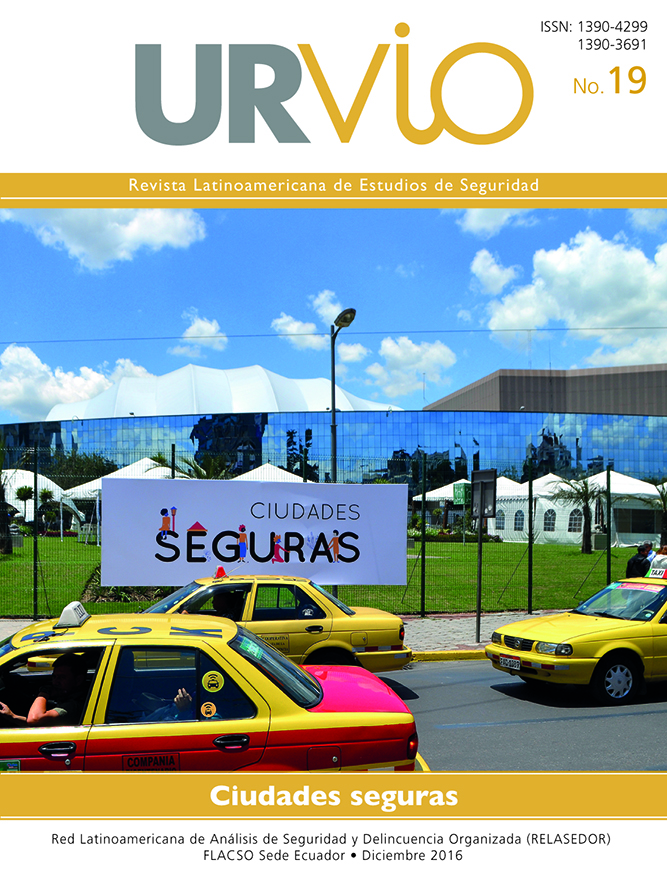Assessing the practice of hot spots policing in Bogotá and Medellín
Main Article Content
Abstract
Hot spots policing strategy uses pervasive deployment of police officers on the beat to reduce crime, which is highly concentrated in a few areas. In Colombia, cities like Bogota and Medellin have systematically implemented this model since 2009 regardless changes of their administrations. This article assesses the practice of both experiences on the way in which the model has been implemented from 2009. It concludes that, as result of the lack of scientific evaluations, it is impossible to definitely determine that crime has decreased in such sensitive areas; notwithstanding, crime reduction seems to be higher where police presence has increased.
Downloads
Article Details

Urvio, Revista Latinoamericana de Estudios de Seguridad, operates under Creative Commons Attribution-No Derivative Work 3.0 unported (CC BY-ND 3.0).
The authors who publish in Urvio accept these terms:
You are free to share / copy and redistribute the material in any medium or format for any purpose, including commercial. Therefore, authors retain the copyright and cede to the journal the right of the first publication (CC by-ND 3.0), which allows third parties the redistribution, commercial or noncommercial, of what is published as long as the article circulates without changes.
The following conditions exist for the authors:
Recognition - you must recognize the authorship, provide a link to the license and indicate whether changes have been made. You can do this in any way reasonable, but not in a way that suggest that has the support of the licensor or receives it by the use he makes.
Without Derivative Work – If you remixed, transform or create a work from the original material, you cannot broadcast the modified material.
For more details, visit the page of Creative Commons (CC).






